Activities in senior living facilities (establishment for dependent elderly people) have a significant impact on the quality of life of the residents. Activities can take different forms, whether it is collective or individual activities. Both forms have advantages and disadvantages, and the choice depends on the needs and preferences of the residents.
Group activities in senior living facilities
Group activities are offered to a group of residents. This form of entertainment can be very stimulating for residents, as it allows them to socialize and interact with others.
These activities can also foster a sense of community and strengthen the bonds between residents.
Group activities can take many forms, from board games to group exercise to creative workshops to cultural outings. Facilitators often work with residents to design activities tailored to their interests and mobility levels.
These events in senior living facilities have many advantages for the residents.
Here are some of the most important benefits:
- Promote socialization: Group activities allow residents to socialize and interact with others. This can help reduce isolation and loneliness, which are common problems among older adults.
- Stimulate cognition: Group activities can help stimulate residents’ cognition by engaging them in intellectually stimulating activities, such as board games or group discussions. This can help improve memory, concentration and critical thinking.
- Building a sense of community: Group activities can help build a sense of community in the senior living facilities. Residents can feel more connected to each other, which can help create a more positive and enjoyable environment for everyone.
- Encourage participation: Group activities can encourage residents to participate in activities they might not otherwise do. This can help maintain a high level of physical and mental activity, which can have beneficial effects on overall health and well-being.
- Offer a variety of activities: Group activities can offer a wide variety of activities for residents, which can help maintain their interest and motivation. Facilitators may offer different activities to ensure that each resident finds something that suits them.
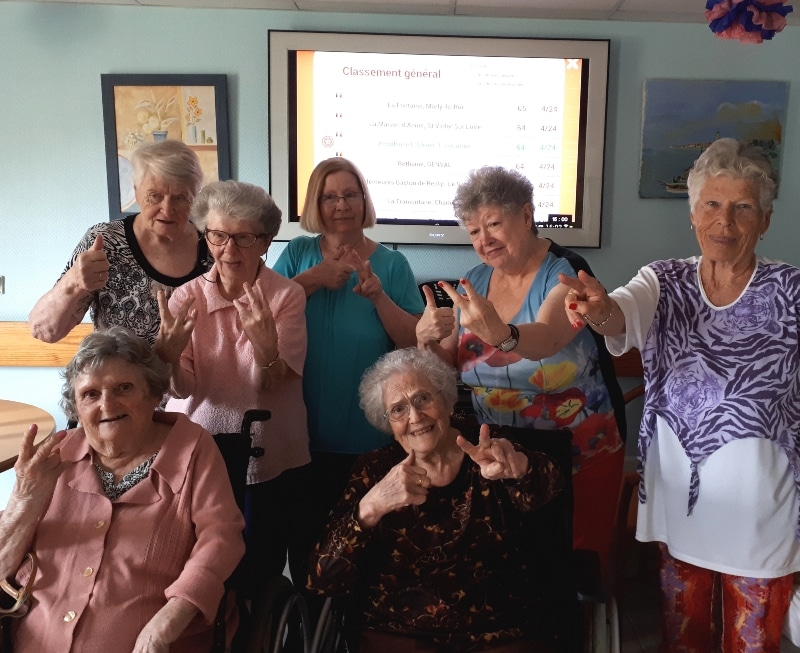
In sum, group activities can offer many benefits to senior living residents, including promoting socialization, stimulating cognition, enhancing a sense of community, encouraging participation, and offering a variety of activities. However, it is important to find a balance between group and individual activities to meet the needs and preferences of each resident.
However, group animation may not be appropriate for all residents. Some may be intimidated by large groups or may prefer quieter, more individualized activities.
1-to-1 activities in senior living facilities
Individual activities (or 1-to-1 activities) is an activity offered to a single resident. This form of animation can be very beneficial for residents who have special needs or who prefer quieter, more intimate activities. Individual activities can also be tailored to a resident’s specific mobility and interests.
Individual activities may include reading, memory games, conversations or walks. Facilitators can work with residents to design activities that meet their needs and preferences.
1-to-1 activities in senior living facilities also has many advantages for the residents. Here are some of the most important benefits:
- Tailor activities to individual needs and preferences: Individual activities can be tailored to each resident’s individual needs and preferences, which can help ensure that each resident receives personalized attention tailored to their needs.
- Provide quiet and privacy: Individual activities can provide quiet and privacy, which may be important for some residents who prefer quieter activities or who have mental or emotional health issues.
- Encourage one-on-one interaction: One-on-one activities can encourage one-on-one interaction between the resident and the facilitator, which can help strengthen the relationship between the two and provide a more personalized and positive experience for the resident.
- Provide individualized care: Individual activities can allow the facilitator to provide personalized care, such as massage or wellness treatments, that can help improve the resident’s health and well-being.
- Tailor activities to health needs: Individual activities can be tailored to each resident’s individual health needs, which can help ensure that each resident receives appropriate care for their specific needs.
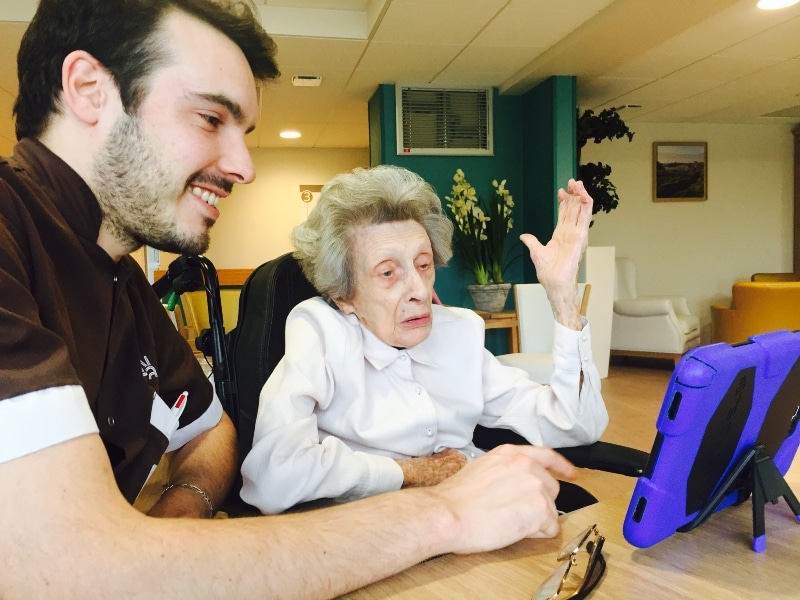
In sum, one-on-one facilitation can provide many benefits to senior living residents, including tailoring activities to individual needs and preferences, providing quiet and private time, encouraging one-on-one interaction, providing personalized care, and tailoring activities to individual health needs. However, it is important to find a balance between group and individual activities to meet the needs and preferences of each resident.
However, one-on-one facilitation can be more costly in terms of time and resources than group facilitation, as it requires more staff and individual interaction.
The digital trend in senior living facilities
The use of digital technologies for activies allows the activiy directors in senior living facilities to save time in the preparation and implementation of activities for residents. Indeed, these activities are often ready to use, with interactive contents, activity sheets, communication supports and equipments provided by the companies which propose them. This allows the activity director to concentrate on the essential: the support and the supervision of the residents during the activities.
In addition, the digital activities can be reused multiple times, with possible variations to tailor the activity to the needs and interests of the residents. This optimization in the preparation and activity time can contribute to improving the quality of life of residents by offering them more varied and regular activities, without overloading the animators in charge of their organization.
In addition to the obvious time savings that facilitators experience with these new technologies, they are also happy to have rewarding and innovative tools. This also allows the caregivers to take over the animation.
CLINT
A program of more than 30 cognitive games for independent seniors (general knowledge quizzes, games on geography, history, literature…).
In groups or individually
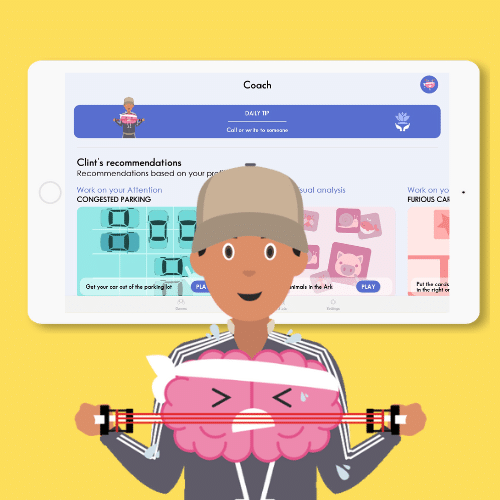
SCARLETT
A program of more than 30 cognitive games for seniors in nursing homes (general knowledge quizzes, music games, games on proverbs, recipes…).
In groups or individually
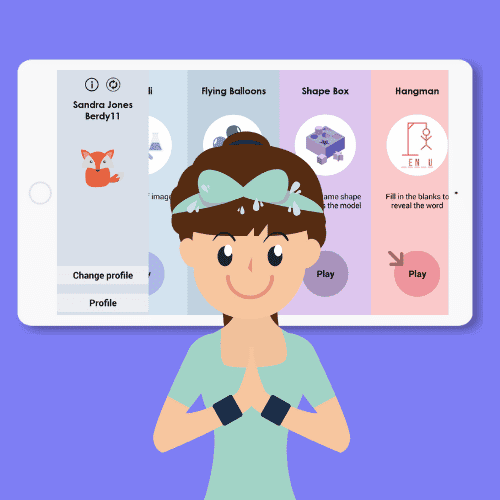
BEBUZZ
With BeBuzz, residents compete on general knowledge quizzes by answering on their own on tactile buzzers. Everyone participates!
In group
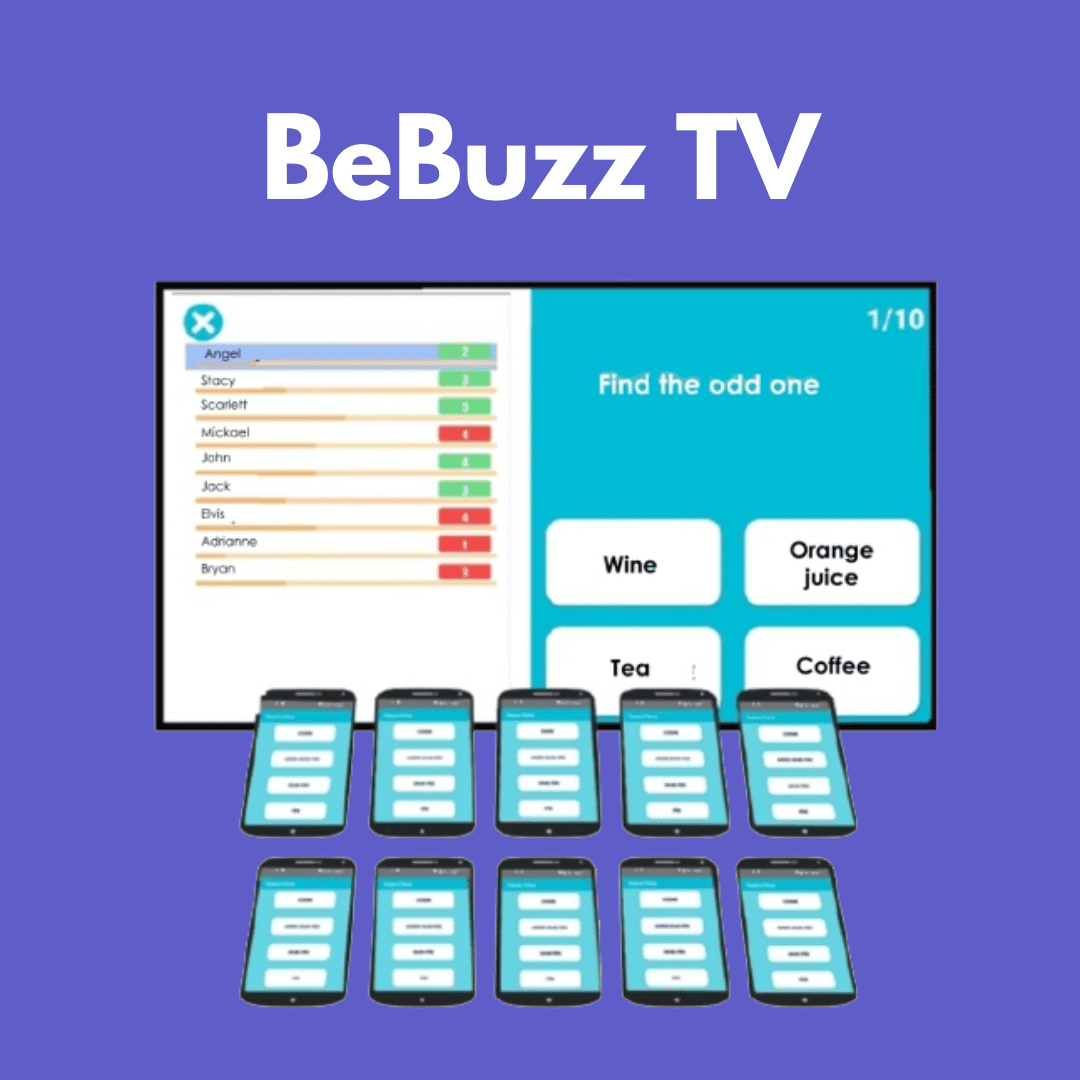
Digital technology, a practical tool for caregivers involved in animation
In many senior living facilities establishments, caregivers are increasingly asked to participate in animation activities, especially on weekends. This evolution responds to the growing demand of residents for varied and regular activities, but also to the difficulties encountered in recruiting qualified animators. Caregivers are often at the forefront of organizing and facilitating activities because they know the residents and their needs well. However, this increased involvement of caregivers in animation can pose problems of organization, training and workload. Indeed, caregivers often have to reconcile their primary mission of caring for residents with their role as animators, without having any extra time to prepare and supervise the activities. Digital technology is very practical because they can project a quiz, a geography game, a hangman game on a large screen and organize this animation in 30 seconds.
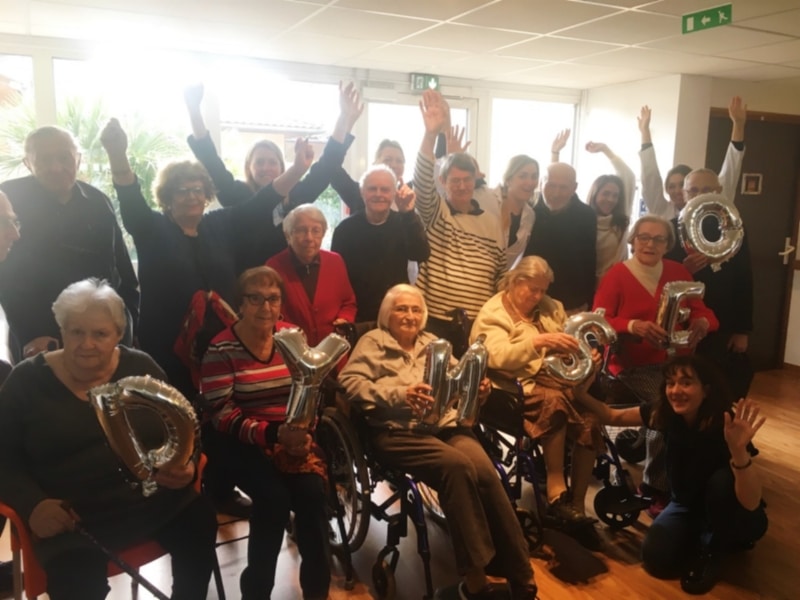
However, it is important to note that the use of digital in senior living facilities can also present challenges, such as training for facilitators, accessibility for residents with vision or hearing issues, and the need to balance digital use with in-person social interactions.
Necessary training of staff in digital animation
The training of staff in digital animation is essential to ensure the quality of activities offered to residents in senior living facilities. Facilitators need to be trained in the use of digital tools and online facilitation so that they can provide activities tailored to the needs and abilities of residents. Training must be continuous, as technologies are rapidly evolving, and adapted to the different skills and experiences of the facilitators. It is important to provide hands-on training, which allows facilitators to become familiar with digital tools and use them creatively. Training should also include modules on data security, privacy, and technology risk prevention. Finally, the training of the animators must be integrated into a global approach to improve the quality of life of the residents in senior living facilities, by aiming to promote their well-being and fulfillment. By providing quality training for facilitators, facilities can improve the quality of their facilitation activities, increase resident participation and contribute to their personal development.
Digital technology, a tool to foster team spirit among residents
Digital technology can be used in senior living facilities to foster team spirit among residents. Digital tools, such as tablets and computers, allow residents to communicate with each other, share ideas, and cooperate on common projects. For example, some facilities have established writing clubs where residents write stories together, using online collaborative tools. Others have organized online games, such as video game tournaments, that allow residents to play together and support each other. By using digital technology in a fun and participative way, residents can strengthen their team spirit and cohesion, which contributes to improving their quality of life in senior living facilities. In addition, this use of digital technology can allow residents to learn new technologies, maintain their autonomy and independence, and stay connected to the outside world. It is therefore important to promote the use of digital technology in senior living facilities, ensuring that it is accessible to all residents and offering appropriate support.
For example, the Top Culture contest is a real unifying moment for the residents.
TOP CULTURE,
an inter-residence contest
For 15 days, twice a year, the residences compete on general knowledge quizzes. 32 questions per day, and a real-time ranking. Residents respond as a team, allowing them to respond together, and to get to know each other. Who is good at history? It’s Mister Jones, we’re going to go get him!
With more than 7 participating countries, these are like the Olympic Games for nursing homes.
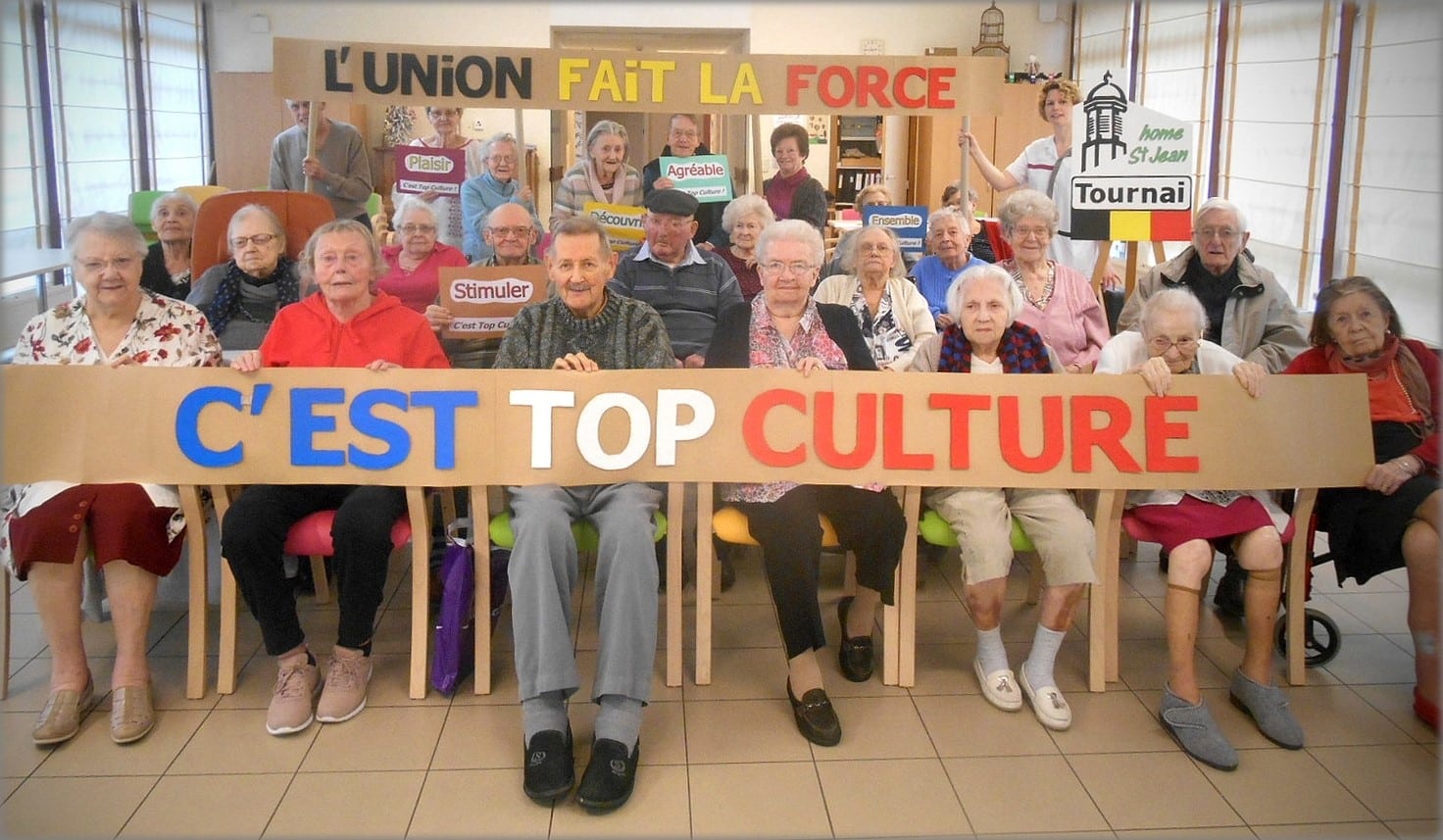
The virtual reality trend for senior living facilities activities
Virtual reality is a trend that is beginning to emerge in senior living facilities, offering a new form of animation for residents. Using virtual reality headsets, residents can be transported to immersive virtual environments, such as museums, nature parks or historic cities. Virtual reality can also be used for cognitive stimulation activities, such as memory games or concentration exercises. The advantages of virtual reality in senior living facilities are multiple, because it allows residents to discover new horizons, stimulate their imagination and escape from their daily lives. In addition, virtual reality can help reduce social isolation by promoting interaction between residents and animators during animation sessions. Although virtual reality is not yet widespread in senior living facilities, it represents a promising avenue for diversifying the activities offered to residents.
Other articles that might interest you:
The Role of Cognitive Apps in Speech Therapy for Alzheimer’s Patients
Alzheimer’s disease is a progressive neurological disorder that primarily affects memory, thinking, and behavior. As...
Memory Apps for Alzheimer’s: Enhancing Recall in Speech Therapy Sessions
Alzheimer's disease is a progressive neurological disorder that primarily affects memory, thinking, and behavior. As...
Cognitive Rehabilitation Apps for Speech Therapy with Alzheimer’s Patients
In recent years, the landscape of cognitive rehabilitation has evolved significantly, largely due to the advent of...







